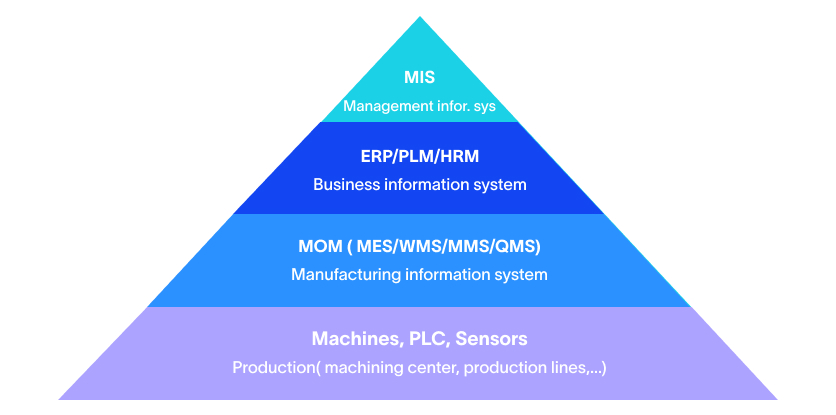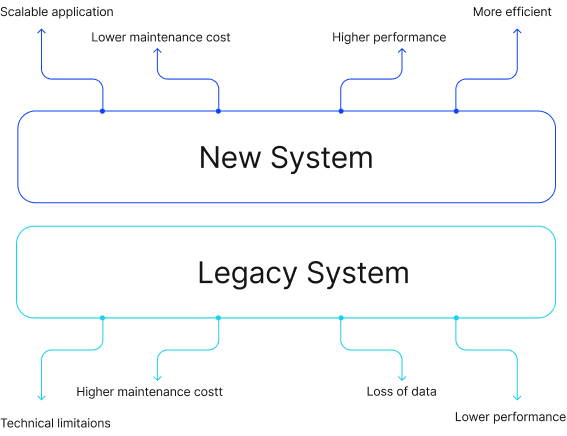When Your Critical Equipment Goes Dark: How AI-Powered SCADA Systems Turn Costly Downtime Into Competitive Advantage
Blog
5 Min 16 Sec Read
Picture this: It’s 3 AM on a Tuesday, and your most critical production line just went silent. No warning. No gradual decline. Just… stopped. Your night shift supervisor is scrambling to diagnose the issue while every minute of downtime costs your operation thousands of dollars. Sound familiar?
You’re not alone. Unplanned equipment downtime costs industrial manufacturers over $50 billion annually, according to recent industry studies. But here’s what’s really frustrating – most of these failures could have been prevented with the right technology watching your systems.
The traditional approach to equipment monitoring is beyond what efficient equipment monitoring practices look like. It’s like driving with your eyes blindfolded. You only rely on the sound of the engine to know if everything is operating smoothly or not.
That’s where AI SCADA becomes essential in today’s fast-paced environment.
Why Traditional SCADA Systems Fall Short in Today’s Manufacturing Environment
SCADA (Supervisory Control and Data Acquisition) systems are the backbone of industrial operations. It collects and proactively visualizes data and enables remote control of equipment. But, it’s critical to note that traditional SCADA systems have limitations, making them a liability in the fast-paced manufacturing world today.
Traditional SCADA systems are more like silent observers. Users get some insights into the incidents with the manufacturing line thanks to SCADA systems. These systems collect a significant amount of data. But the limitation remains in the utility part, where they fail to build actionable insights from the data before the problems occur.
Manufacturing executives typically struggle with the problem after it occurs. There are hardly any insights to use for building preventive measures. Traditional SCADA systems act like security cameras, building a network of vigilance to spot problems when they occur. But they fail to build a preventive measure.
Discover how modern SCADA systems are transforming manufacturing operations with smarter control and monitoring.
How Does AI SCADA Improve Manufacturing Operations?
AI SCADA systems completely changes the equation with the manufacturing line. It integrates machine learning algorithms into the existing SCADA infrastructure.
While the traditional SCADA system used to take a predictive approach to your manufacturing process, AI-powered SCADA makes it a reactive process, shielding your manufacturing line from disruption.
AI SCADA systems work by:
- Pattern Recognition: Machine learning is efficient at surpassing human errors. It analyzes historical data and finds patterns of anomalies that could affect the manufacturing line in the future.
- Real-Time Analysis: It’s an understatement to say that AI is fast. It’s capable of analyzing thousands of data points simultaneously, scanning for problems and reacting to anomalies before they arise.
- Continuous Learning: The system improves itself constantly. It learns from your specific equipment and processes, refining predictive measures for more critical and complex scenarios.
- Automated Response: When potential issues are detected, AI can trigger preventive actions. Therefore, the alerts sent to the operators with recommendations help build preventive measures.
Instead of waiting for alarms to sound, AI-powered SCADA systems whisper warnings about potential problems hours or even days in advance.
Discover whether SCADA or IIoT is the best fit for optimizing your factory processes and efficiency.
What Makes Industrial AI Different from Regular Automation
You might be thinking, “We already have automation in our plant.” But industrial AI goes far beyond traditional automation AI. While standard automation follows pre-programmed rules (“if this, then that”), industrial AI creates its own rules based on the patterns it discovers in your data.
Traditional automation says: “When temperature exceeds 150°F, turn on the cooling system.”
Industrial AI says: “Based on current vibration patterns, ambient temperature trends, and historical maintenance data, this motor will likely overheat in 6 hours. I recommend adjusting the cooling cycle now and scheduling maintenance for next Tuesday.”
The difference is profound. One responds to problems; the other prevents them.
See why MES combined with SCADA modernization is essential for achieving smart manufacturing efficiency.
Machine Learning SCADA: Turning Data Into Dollars
Here’s where the rubber meets the road. Machine learning SCADA systems don’t just prevent downtime – they optimize your entire operation for maximum efficiency and profitability.
Real-World Impact:
A major automotive manufacturer implementing AI-powered SCADA saw:
- 35% reduction in unplanned downtime
- 28% increase in overall equipment effectiveness (OEE)
- $2.3 million in annual savings from prevented failures
- 50% reduction in maintenance costs through optimized scheduling
These are more than numbers on a spreadsheet. They are the experts who represent real competitive advantage in an increasingly challenging market.
Learn why integrating SCADA systems is essential for improving productivity and reducing downtime.
Predictive Analytics: The Crystal Ball for Manufacturing
AI SCADA systems depend on the predictive analytics engine that supports them. This is the stage where machine learning algorithms analyze patterns in the operational data for forecasting future equipment behaviors.
Key Predictive Capabilities Include:
- Failure Prediction: Identifying which components are most likely to fail and when
- Performance Optimization: Recommending optimal operating parameters for maximum efficiency
- Maintenance Scheduling: Determining the perfect time for preventive maintenance based on actual equipment condition
- Quality Forecasting: Predicting product quality issues before they occur
Think of predictive analytics as having a crystal ball that actually works – one backed by data science rather than wishful thinking.
Discover how executives can leverage AI and predictive analytics to minimize downtime and improve performance.
Platform Flexibility: Working with Your Existing Infrastructure
The modern AI SCADA implementation works with the existing system. Whether you have legacy systems or are running popular platforms, AI integration will only enhance output instead of replacing your current infrastructure.
Modern AI SCADA solutions are built with platform flexibility in mind, ensuring seamless integration regardless of your current setup.
AI in Manufacturing: Beyond SCADA Systems
While SCADA forms the nervous system of your operation, AI in manufacturing extends far beyond supervisory control. Modern industrial AI creates an interconnected ecosystem where every component communicates and collaborates.
The Broader AI Manufacturing Ecosystem:
- Quality Control: Computer vision systems detect defects invisible to human inspectors
- Supply Chain Optimization: AI predicting material needs and optimizing inventory levels
- Energy Management: Intelligent systems reducing energy consumption while maintaining productivity
- Workforce Optimization: AI helping schedule maintenance during optimal windows to minimize production impact
The result is a manufacturing operation that thinks, learns, and improves continuously.
Making the Business Case for AI-Powered SCADA Systems
Here’s the question every plant manager and CFO asks: “What’s the ROI?” The answer depends on your current pain points, but the math is typically compelling.
Typical ROI Components:
- Downtime Reduction: Even a 20% reduction in unplanned downtime can save millions annually
- Maintenance Optimization: Shifting from reactive to predictive maintenance typically reduces costs by 25-30%
- Energy Savings: AI optimization often reduces energy consumption by 10-15%
- Quality Improvements: Fewer defects mean less waste and higher customer satisfaction
- Labor Efficiency: Operators spend time optimizing rather than firefighting
Most organizations see complete ROI within 12-18 months, with benefits compounding over time as the AI system becomes more intelligent.
Avoid the most common SCADA integration mistakes with proven solutions that save time and money.
The INS3 Approach: From Assessment to Implementation
At INS3, we’ve developed a proven methodology for transforming manufacturing operations with AI-powered SCADA systems. Our process ensures successful implementation while minimizing disruption to your ongoing operations.
Our Four-Phase Implementation Process:
Deep Dive Assessment
- Comprehensive evaluation of the current SCADA infrastructure and data quality
- Identification of highest-impact opportunities for AI integration
- Establishment of clear baseline metrics and success criteria
Strategic Pilot Deployment
- Implementation of AI SCADA on carefully selected critical processes
- Real-time validation and algorithm fine-tuning based on your specific operations
- Quantifiable ROI demonstration to key stakeholders
Intelligent Scale-Up
- Systematic expansion of proven AI models across similar equipment and processes
- Integration with existing manufacturing execution systems and enterprise platforms
- Development of custom AI solutions tailored to your unique operational challenges
Continuous Optimization
- Ongoing model refinement and performance enhancement
- Integration of new data sources and emerging AI technologies
- Regular assessment and expansion into adjacent use cases
This methodical approach ensures your AI SCADA implementation delivers measurable results from day one while building the foundation for long-term competitive advantage.
Learn how SCADA security protects your industrial control systems from evolving cyber threats.
Turn Equipment Downtime Into Competitive Advantage
The manufacturing landscape is evolving rapidly. Companies that embrace AI-powered SCADA systems today will result in significant competitive advantages in the future. Those that wait risk being left behind by more agile competitors.
The good news is: this technology is no longer experimental. It’s practical, profitable, and proven. With AI being the new age norm, use of AI SCADA is more than necessary—it’s essential.
INS3 has already started helping dozens of leading manufacturing companies to terraform their operations with intelligent SCADA systems. Our approach uses a combination of intelligent SCADA systems and real-world manufacturing expertise.
INS3 sees beyond the implementation phase and focuses on ensuring results through AI implementation. In short, INS3 helps achieve results from day one and ensures results from AI implementation in operational and delivery processes.
Ready to turn your equipment downtime into competitive uptime?
Contact INS3 today. We’ll help you discover how our proven AI-powered SCADA methodology transforms your manufacturing operation. The team of manufacturing and AI automation experts at INS3 ensures that AI SCADA Integration meets your specific needs and helps you gain ROI.
Don’t let another unexpected failure cost your operation thousands of dollars. The future of manufacturing is intelligent – and it starts with your next conversation with INS3.

Agile MES: The Key to Unlocking Smart Manufacturing Success
MES is a computerized system used in manufacturing operations to track and document the transformation of raw materials into finished goods. An MES system typically manages and monitors work orders, equipment, materials, and personnel on the shop floor. The system provides real-time visibility into production processes, helps optimize manufacturing operations, and improves the overall efficiency of the manufacturing process.

Understanding OEE: The Key to Manufacturing Efficiency
In today’s competitive manufacturing landscape, improving efficiency and productivity is crucial for businesses to remain competitive. One of the key metrics used to measure manufacturing efficiency is OEE or Overall Equipment Effectiveness. In this blog, we will take a closer look at OEE and its importance in manufacturing.

How to Effectively Conduct a Legacy System Integration
Legacy system integration can be a daunting task, but it’s a necessary one for many manufacturers that rely on outdated systems to run their business. Integrating legacy systems with modern technology can improve efficiency, streamline processes, and save time and money. However, it’s important to approach the integration process carefully and methodically to ensure success.
Share on :
Keep On Reading
Subscribe to Our Newsletter
Subscribe to our weekly newsletters to get updates regarding our new production, behind the scene process of our art creation and much more.
After submitting this form you will receive an e-mail with a confirmation link that you must click to complete your request. Detailed information on processing and cancellation can be found in our privacy policy.

